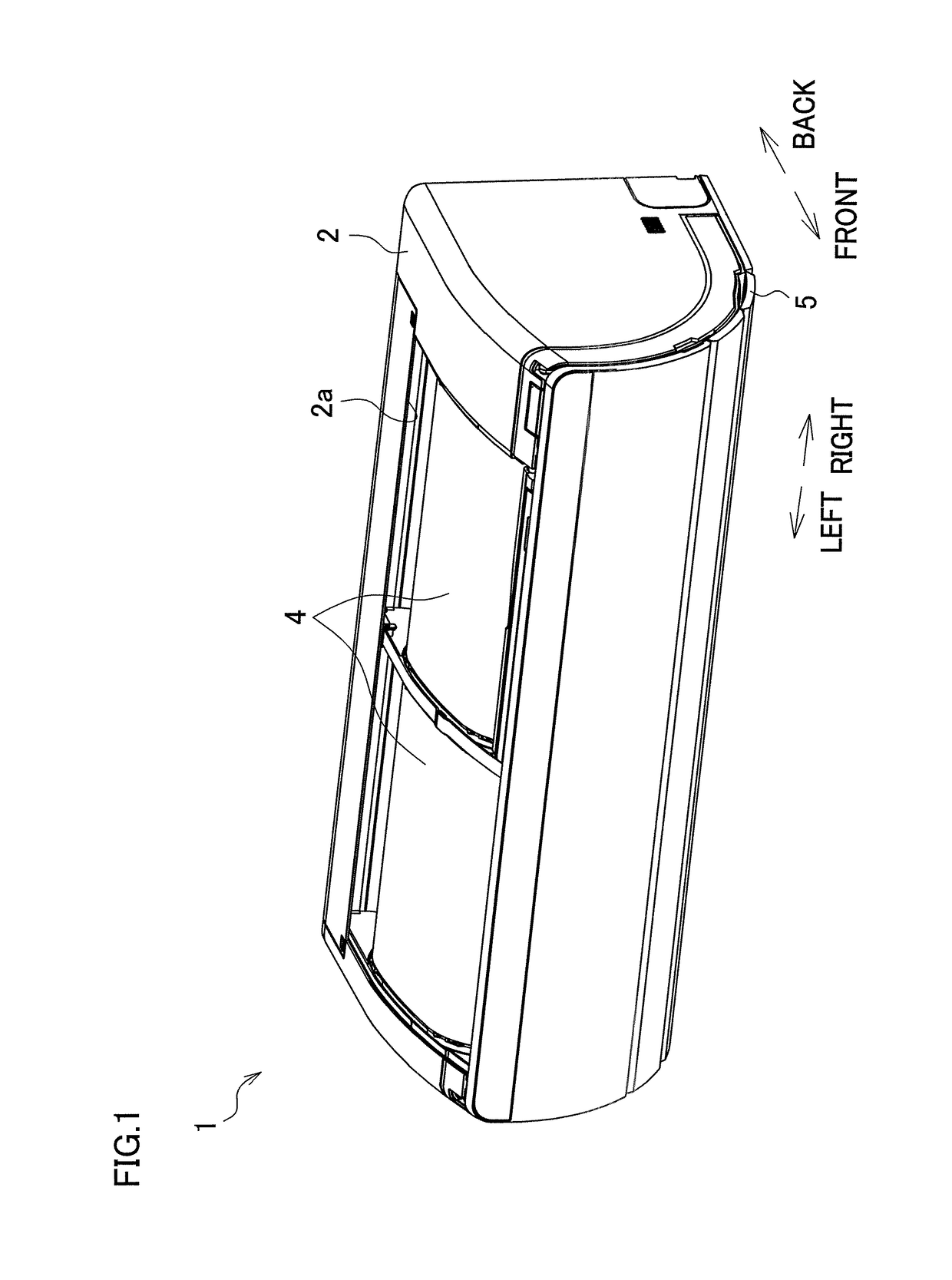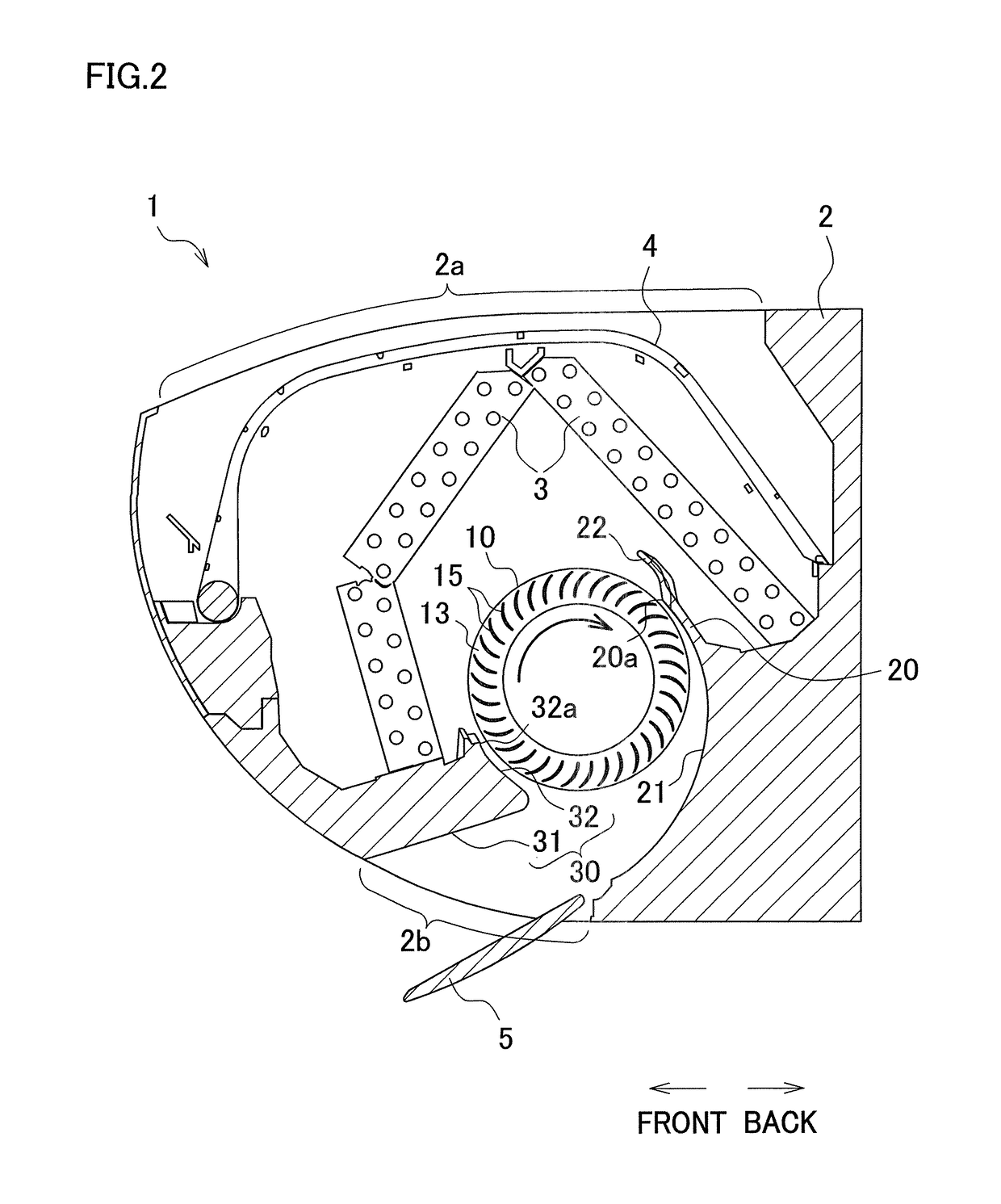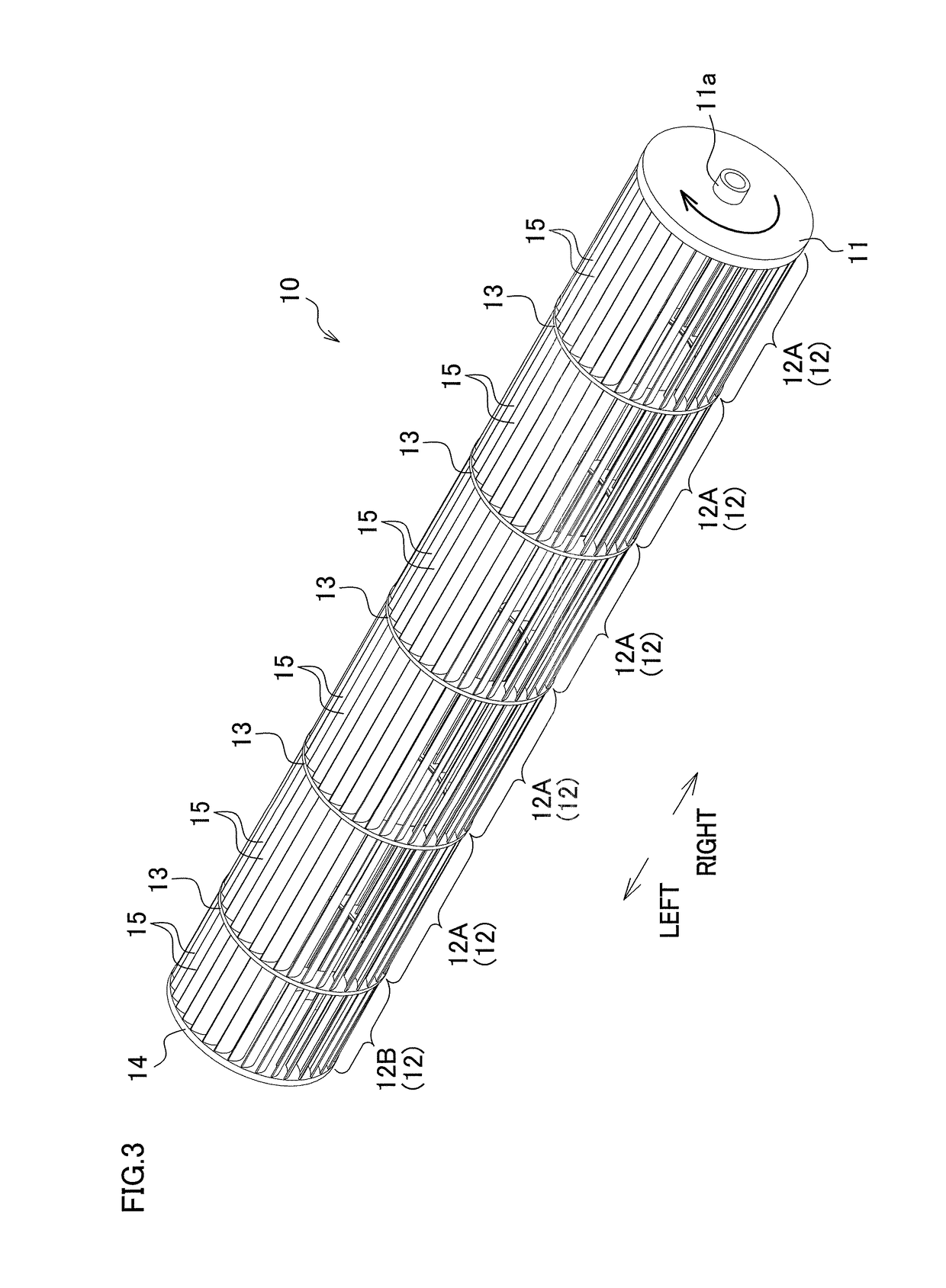Air conditioner
a technology for air conditioners and fans, applied in lighting and heating apparatus, ventilation systems, heating types, etc., can solve the problems of generating wind noise (nz noise) and temporally spreading wind noise, and achieve the effects of suppressing wind noise, reducing wind noise, and reducing wind nois
- Summary
- Abstract
- Description
- Claims
- Application Information
AI Technical Summary
Benefits of technology
Problems solved by technology
Method used
Image
Examples
Embodiment Construction
[0051]The following will describe an embodiment of the present invention. As shown in FIG. 1, an indoor unit 1 of an air conditioner of the present embodiment is as a whole narrow and long in one direction in shape, and is attached to a wall of a room so that the length of the air conditioner is horizontal. The indoor unit 1 and an unillustrated outdoor unit constitute the air conditioner which cools or warms the room. Hereinafter, a direction of protrusion from the wall to which the indoor unit 1 is attached will be referred to as “frontward”, whereas the direction opposite to the frontward will be referred to as “backward”. Furthermore, the left-right direction in FIG. 1 will be simply referred to as “left-right direction”.
[0052]As shown in FIG. 2, the indoor unit 1 includes a casing 2 and internal devices stored in the casing 2 such as a heat exchanger 3, a cross flow fan 10, a filter 4, and an electronic component box (not illustrated). Through the upper surface of the casing 2 ...
PUM
 Login to View More
Login to View More Abstract
Description
Claims
Application Information
 Login to View More
Login to View More - R&D
- Intellectual Property
- Life Sciences
- Materials
- Tech Scout
- Unparalleled Data Quality
- Higher Quality Content
- 60% Fewer Hallucinations
Browse by: Latest US Patents, China's latest patents, Technical Efficacy Thesaurus, Application Domain, Technology Topic, Popular Technical Reports.
© 2025 PatSnap. All rights reserved.Legal|Privacy policy|Modern Slavery Act Transparency Statement|Sitemap|About US| Contact US: help@patsnap.com



